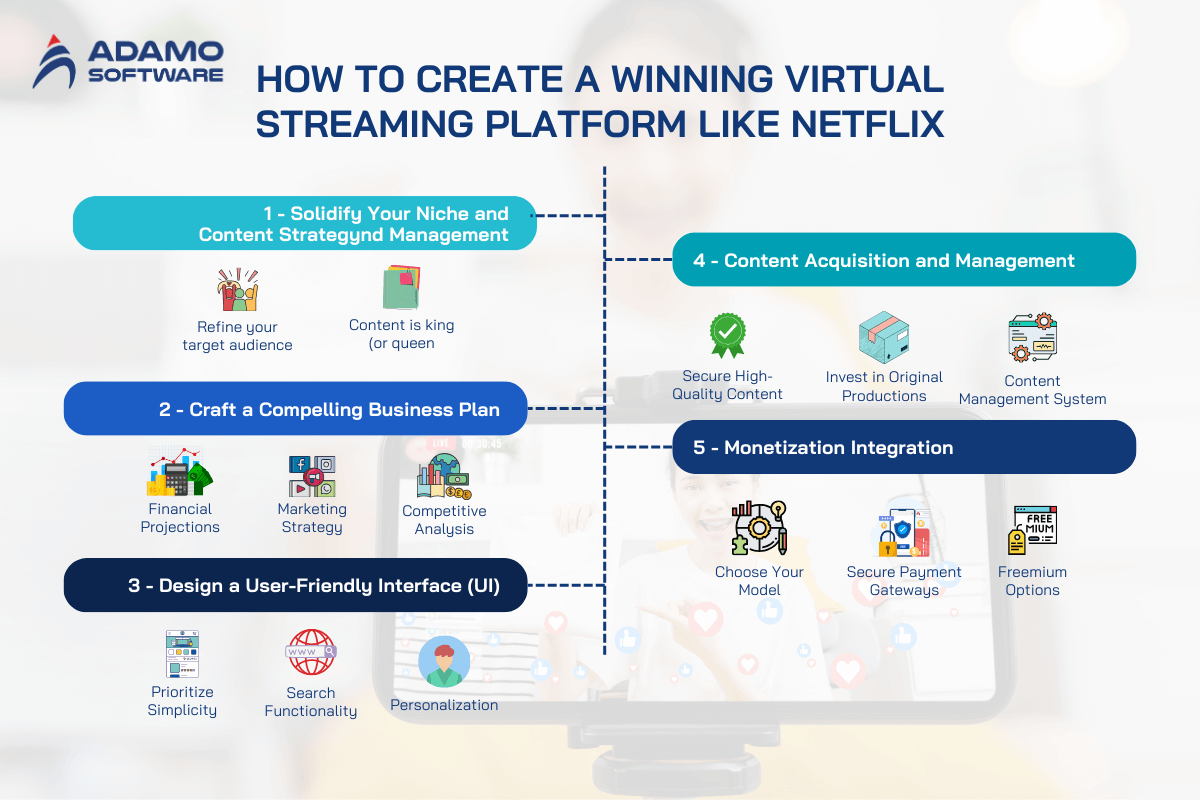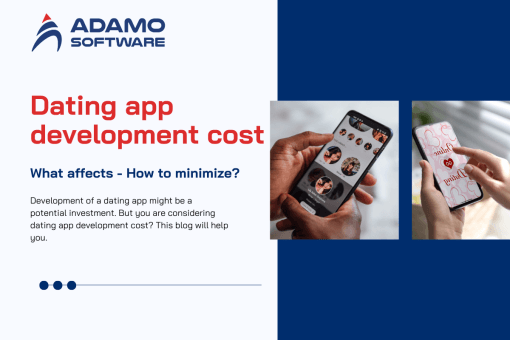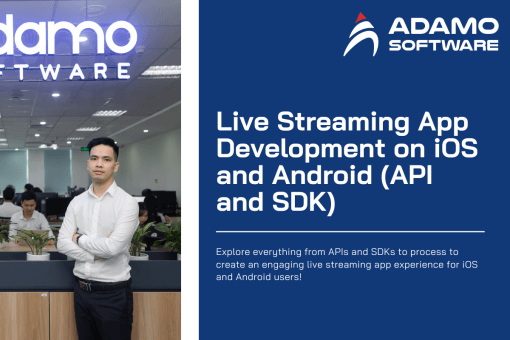How to Build Online Streaming Platform: Features, Tech Stacks & Costs

In today’s digital age, online streaming platforms have revolutionized entertainment consumption. From blockbuster movies to niche documentaries, viewers have access to a vast library of content at their fingertips. But have you ever wondered what goes into building this online streaming platform?
This comprehensive guide delves into the exciting world of online streaming platform development. We’ll explore the fundamentals, different platform types, essential features, and the tech stack that powers it all.
I. Fundamentals of creating online streaming platforms
The world of online streaming has become a dominant force in entertainment, education, and beyond. But before you jump into building your own platform, it’s crucial to establish a solid foundation. Here, we’ll delve into the fundamentals that will set your streaming venture on the path to success:
1. Identifying Your Niche
The streaming landscape is vast and competitive. To stand out, defining your target audience is paramount. Here are some questions to consider:
– Who are you trying to reach? Are you targeting gamers, fitness enthusiasts, movie buffs, or a specific professional niche?
– What content will resonate with them? Understanding your audience’s interests and viewing habits is key to curating content that keeps them engaged
2. Crafting a Compelling Content Strategy
Content is the king (or queen) of any streaming platform. Here are some strategies to consider:
– Original Productions: Develop unique and high-quality content that sets your platform apart.
– Licensed Content: Secure licensing deals to offer popular movies, TV shows, or documentaries.
– Curated Content: Partner with content creators or leverage user-generated content (UGC) for a broader variety
3. Choosing the Right Monetization Model
How will you generate revenue to keep your online streaming platform running? Here are some popular options:
– Subscription Model: Offer tiered memberships with varying levels of access and pricing.
– Advertising Model: Integrate targeted ads within the platform (ensure a user-friendly experience).
– Pay-per-View (PPV): Allow users to purchase access to specific content events or premium features.
– Freemium Model: Offer a basic level of content for free with premium features available through subscriptions or in-app purchases.
4. Prioritizing User Experience (UX)
In today’s competitive landscape, a user-friendly and intuitive platform is essential. Here are some UX considerations:
– Seamless Navigation: Make it easy for users to find the content they’re looking for with clear categories, search functions, and personalized recommendations.
– High-Quality Playback: Ensure smooth streaming across various internet speeds and devices.
– Multiple Device Compatibility: Your platform should be accessible on desktops, laptops, tablets, and smartphones.
By establishing a strong foundation with these core principles in mind, you’ll be well-equipped to navigate the exciting world of online streaming platform development. The following sections will delve deeper into specific platform types, essential features, and the technology that powers it all.
II. Different types of online streaming platforms that you can invest in
The world of online streaming extends far beyond entertainment. From fitness classes to educational lectures, various platforms cater to diverse content and user needs. Here’s a closer look at some prominent types of online streaming platforms you can consider for your venture:
1. Video-on-Demand (VOD)
– Content: Think Netflix, Hulu, or Disney+. VOD platforms offer users on-demand access to a vast library of pre-recorded video content, including movies, TV shows, documentaries, and more.
– Benefits: Users enjoy the flexibility of watching what they want, whenever they want, with the ability to pause, rewind, and fast-forward content.
– Monetization: Popular monetization models include subscription fees, tiered memberships with varying content access, and pay-per-view options for specific movies or events.
2. Live Streaming
– Content: Platforms like Twitch or YouTube Live cater to real-time broadcasts. This format is perfect for live events, gaming streams, educational webinars, or interactive fitness classes.
– Benefits: Live streaming offers a sense of community and real-time engagement between broadcasters and viewers. It’s ideal for interactive content and fostering a loyal audience.
– Monetization: Live streaming platforms can generate revenue through subscriptions, in-platform virtual gifts or tipping features from viewers to broadcasters, and advertising.
3. Audio Streaming
– Content: Music streaming giants like Spotify or Apple Music dominate this category. These platforms offer on-demand access to a vast library of music, podcasts, and audiobooks.
– Benefits: Audio streaming provides users with a convenient way to listen to their favorite music or discover new artists, anytime and anywhere.
– Monetization: Subscription fees are the primary revenue model, offering tiered plans with varying features like ad-free listening or offline playback.
4. Enterprise Streaming
– Content: Think internal company communications, training videos, live town halls, or product demonstrations. Enterprise streaming platforms cater to businesses for various applications.
– Benefits: These platforms enhance communication and collaboration within organizations, allowing efficient knowledge sharing and employee training on a large scale.
– Monetization: Enterprise streaming platforms typically operate under subscription models with tiered pricing based on features and user capacity.
Choosing the right platform type depends on your specific niche, target audience, and content strategy. By understanding the different options available, you can make an informed decision that aligns with your vision and goals.
The next section will explore the essential features that make any streaming platform successful, regardless of the content type you choose.
III. How to create a winning virtual streaming platform like Netflix
While emulating giants like Netflix is the ultimate goal, crafting a successful online streaming platform requires strategic planning and a user-centric approach. Here’s a roadmap to guide you through the crucial steps of building a winning platform:

1. Solidify Your Niche and Content Strategy
– Refine your target audience: Revisit your audience research and solidify your ideal user persona. What are their interests and viewing habits?
– Content is king (or queen): Develop a clear content strategy that caters to your target audience. Will you offer original productions, licensed content, or a curated mix?
2. Craft a Compelling Business Plan
– Financial Projections: Outline your startup costs, operational expenses, and projected revenue streams.
– Marketing Strategy: Define your marketing channels to reach your target audience effectively. Consider social media marketing, influencer partnerships, and content marketing strategies.
– Competitive Analysis: Research your competitors in the chosen niche. Identify their strengths and weaknesses to develop a platform that stands out.
3. Design a User-Friendly Interface (UI)
– Prioritize Simplicity: Strive for a clean and intuitive interface that users can navigate effortlessly across devices (desktop, mobile, tablets).
– Search Functionality: Implement a robust search function with filters and categories for easy content discovery.
– Personalization: Incorporate features like watch history recommendations and user profiles to personalize the streaming experience.
4. Content Acquisition and Management
– Secure High-Quality Content: Negotiate licensing deals to acquire popular movies, TV shows, or documentaries (if applicable to your niche).
– Invest in Original Productions (Optional): For a unique selling proposition, consider developing original content that resonates with your target audience.
– Content Management System (CMS): Implement a user-friendly CMS to allow for efficient content upload, editing, and scheduling.
5. Monetization Integration
– Choose Your Model: Select a suitable monetization model (subscription, advertising, pay-per-view, or freemium) that aligns with your content strategy and target audience.
– Secure Payment Gateways: Integrate secure and user-friendly payment gateways to facilitate seamless subscription sign-ups or pay-per-view purchases.
– Freemium Options (if applicable): If you choose a freemium model, ensure the free tier offers enough value to engage users, while incentivizing them to upgrade for a premium experience.
By following these core steps and continuously refining your platform based on user feedback and market trends, you’ll be well on your way to building a successful online streaming platform that rivals the likes of Netflix.
The next section dives deeper into the must-have features that keep users engaged and coming back for more.
You can also explore: 11 steps to build live streaming websites with features and tech stacks here.
IV. Explore must-include features of video streaming platforms
In today’s competitive streaming landscape, keeping users engaged requires a platform packed with features that enhance their viewing experience. Here’s a breakdown of essential features that will make your video online streaming platform stand out:
1. High-Quality Video Playback
– Seamless Streaming: This is paramount. Ensure smooth playback across various internet speeds and device capabilities. Users shouldn’t experience buffering or lag.
– Adaptive Bitrate Streaming: Implement technology that adjusts video quality based on the user’s internet connection to optimize playback.
– Multiple Resolution Options: Allow users to choose between different video resolutions (e.g., SD, HD, 4K) based on their preferences and internet bandwidth.
2. User Experience (UX) and User-Friendly Interface (UI)
– Intuitive Navigation: Design a clean and user-friendly interface that allows users to find content effortlessly. Utilize clear menus, categories, and search functions.
– Personalized Recommendations: Leverage recommendation algorithms to suggest content based on user watch history, browsing behavior, and similar user preferences.
– Offline Viewing (Optional): Allow users to download content for viewing without an internet connection (useful for mobile users or areas with limited internet access).
3. Content Management and Discovery Tools
– Advanced Search Functionality: Integrate a robust search function with filters and categories (genre, release date, actors, etc.) for efficient content discovery.
– Watchlists and User Profiles: Allow users to create personalized watchlists, save favorite content, and manage their viewing history.
– Content Organization: Organize your content library logically using categories, subcategories, and curated collections to streamline navigation.
4. Community Building Features (Optional)
– Social Media Integration: Allow users to connect their social media accounts to share recommendations and discuss content with friends.
– Comment Sections and Forums (if applicable): For specific content types, consider incorporating comment sections or forum features to foster discussions and a sense of community.
– Live Chat Functionality (for live streaming): Enable real-time interaction between viewers and broadcasters during live streams, enhancing engagement.
5. Content Security and Digital Rights Management (DRM)
– Implement robust security measures to protect copyrighted content from piracy and unauthorized distribution.
– Utilize DRM (Digital Rights Management) solutions to control access to content and prevent illegal downloads.
You can also gain insights on Media Asset Management (MAM) – the process and software used to manage high-volume video and multimedia files, which help you organize, store, retrieve, and distribute digital media assets efficiently.
By incorporating these must-have features, you’ll create an online streaming platform that offers a smooth, engaging, and secure viewing experience for your users. This will keep them coming back for more and contribute to the overall success of your platform.
The following section will explore the technical aspects that power these features – the tech stack that makes your streaming platform function seamlessly.
V. Understand tech stack needed to build an online streaming platform
The user-friendly interface and captivating features you envisioned for your streaming platform wouldn’t exist without a robust tech stack – the behind-the-scenes technology that powers everything. Here’s a breakdown of the key components that make up a typical online streaming platform’s tech stack:

1. Programming Languages
– Backend Development: Languages like Python, Java, and Node.js are popular choices for building the server-side functionality that handles user authentication, content management, and core platform logic.
– Frontend Development: JavaScript frameworks like React or Angular are commonly used to develop the user interface (UI) and ensure an interactive and responsive experience across different devices.
2. Streaming Protocols
– Ensuring Smooth Delivery: Protocols like RTMP (Real-Time Messaging Protocol) and HLS (HTTP Live Streaming) are crucial for efficient video and audio delivery to user devices. These protocols manage data transmission and ensure smooth playback.
3. Content Delivery Networks (CDNs)
– Global Reach, Optimal Speeds: CDNs play a vital role in delivering content to users worldwide. By storing cached copies of your content across geographically distributed servers, CDNs ensure fast loading times and minimize buffering issues for users regardless of their location.
4. Cloud Platforms
– Scalability and Storage: Cloud platforms like Amazon Web Services (AWS), Microsoft Azure, or Google Cloud Platform (GCP) offer scalable and reliable storage solutions for your vast content library. Additionally, cloud services provide the infrastructure needed to handle fluctuating user traffic efficiently.
5. Databases
– The Information Hub: Secure and scalable databases are essential for storing user data (profiles, watch history), content information (metadata, descriptions), and platform settings. Popular choices include MySQL, PostgreSQL, and MongoDB.
6. Additional Tools and Services
– Content Security and DRM: Implement security measures and Digital Rights Management (DRM) solutions to protect your content from unauthorized access and piracy.
– Analytics and Reporting Tools: Integrate analytics tools to track user behavior, content popularity, and platform performance. These insights help you optimize your platform and tailor content recommendations for a better user experience.
– Payment Gateways: Choose secure and user-friendly payment gateways to facilitate subscription sign-ups, pay-per-view purchases, and other financial transactions within your platform.
Understanding the tech stack empowers you to make informed decisions when building your online streaming platform. By selecting the right tools and technologies for your specific needs, you can create a scalable and robust foundation for your online streaming venture.
The next section will address a crucial question: how much does it cost to develop such a platform?
VI. How much does it cost to develop an online video streaming platform?
The cost of developing an online streaming platform can vary significantly depending on several factors. Here’s a breakdown of the key elements that impact the overall budget:
1. Platform Complexity
– Basic vs. Feature-Rich: A basic platform with core functionalities like video playback, search, and user profiles will have a lower development cost compared to a feature-rich platform with functionalities like live streaming, AI-powered recommendations, or social media integration.
2. Development Team Expertise
– Experience Matters: Hiring a team of experienced developers well-versed in streaming platform development will likely incur a higher cost upfront. However, their expertise can save time and money in the long run by avoiding technical pitfalls and ensuring efficient development.
– Location and Rates: The geographic location and billing rates of your development team can also influence the overall cost.
3. Tech Stack Selection
– Open-Source vs. Proprietary Solutions: Utilizing open-source technologies and frameworks can be a cost-effective approach. However, you might need to invest more in customization to achieve your desired functionalities. Conversely, opting for pre-built, proprietary solutions can streamline development but might come with licensing fees.
4. Content Delivery Network (CDN) and Cloud Storage Costs
– Scaling for Your Audience: The cost of CDN services and cloud storage will depend on the anticipated user base and the amount of content you plan to host. As your platform grows and attracts more viewers, these costs might increase.
5. Design and User Interface (UI)
– Custom vs. Pre-Built UI Kits: Developing a custom user interface from scratch will require a design team and result in a unique user experience, but it can be more expensive. On the other hand, utilizing pre-built UI kits can be a more cost-effective option, though it might limit design customization.
Here’s a general range to consider, keeping in mind the cost can fluctuate depending on the factors mentioned above:
– Basic Platform: $10,000 – $15,000
– Medium Platform: $16,000 – $21,000
– Complex Platform: $25,000+
Remember, these are just estimates. The best approach is to consult with experienced streaming platform development companies who can assess your specific needs and provide a more accurate cost projection.
The following section will explore industries that can benefit from venturing into the world of online streaming platforms.
VII. What industries get merits from the virtual streaming platform
The world of online streaming has transcended entertainment, offering a powerful tool for various industries. Here’s a glimpse into how different sectors can leverage the merits of virtual streaming platforms:
1. Education & Training
– Enhanced Learning: Educational institutions can utilize streaming platforms to deliver lectures, courses, and educational content to students remotely. This allows for increased accessibility and flexibility in learning.
– Professional Development: Businesses can use platforms to offer training videos, workshops, and certification programs to employees, fostering continuous learning and skill development.
– Livestreaming Events: Virtual conferences, webinars, and live Q&A sessions can be hosted on streaming platforms, connecting educators and learners across geographical boundaries.
2. Fitness & Wellness
– On-Demand Workouts: Fitness instructors can create and share workout videos, yoga classes, or meditation sessions on streaming platforms, providing users with a convenient way to exercise at home or on the go.
– Live Fitness Classes: Livestreaming fitness classes allow for real-time interaction between instructors and participants, fostering a sense of community and motivation.
– Subscription-Based Wellness Programs: Streaming platforms can be used to offer subscription-based wellness programs with personalized workout plans, nutritional guidance, and access to live consultations with fitness professionals.
3. E-commerce & Retail
– Livestream Shopping: E-commerce businesses can leverage live streaming platforms to showcase products, conduct interactive demonstrations, and engage with potential customers in real-time. This can significantly boost sales and brand engagement.
– Product Demos & Tutorials: Streaming platforms can be used to host pre-recorded product demonstrations and tutorials, educating customers about product functionalities and features.
– Virtual Showrooms: Retailers can create virtual showrooms using streaming technology, allowing customers to explore products in a 3D environment from the comfort of their homes.
4. Media & Entertainment (Beyond Video Streaming)
– Podcasts & Audiobooks: The streaming model extends beyond video content. Platforms can cater to audiobooks, podcasts, and live radio broadcasts, offering a diverse range of audio entertainment options.
– Live Music Events: Streaming platforms can host live music concerts, performances, and music festivals, reaching a global audience and creating new revenue streams for artists.
– Behind-the-Scenes Content: Streaming platforms can provide exclusive behind-the-scenes content, interviews, and bonus features to supplement traditional media offerings, fostering deeper fan engagement.
These are just a few examples of online streaming platforms, and the possibilities are constantly evolving. As technology advances, we can expect online streaming platforms to become even more integrated into various industries, transforming communication, education, and how businesses operate in the digital age.
The final section will explore why you might consider Adamo as a reliable development partner for your online streaming platform.
VIII. Why Select Adamo as a Reliable Video Streaming Platform Development Company
Venturing into the world of online streaming platforms requires a reliable development partner who understands the intricacies of the technology and the ever-evolving landscape. Here’s why Adamo stands out as the perfect choice for your streaming platform development needs:
1. Proven Expertise and Experience
– Our team of skilled developers possesses extensive experience in crafting high-quality, scalable video streaming platforms.
– We have a successful track record of delivering innovative solutions that cater to diverse industry needs and user demands.
2. Commitment to Client Vision and Collaboration
– We prioritize understanding your vision and target audience. Through open communication and collaboration, we’ll translate your ideas into a user-centric and feature-rich streaming platform.
3. Scalable and Future-Proof Solutions
– We leverage cutting-edge technologies and industry best practices to build platforms that can accommodate growth and adapt to future advancements in the streaming landscape.
4. Focus on User Experience (UX) and Security
– We prioritize creating intuitive and user-friendly interfaces that keep your audience engaged.
– Security is paramount – we implement robust security measures to protect user data and copyrighted content.
5. Cost-Effective Development and Ongoing Support
– We offer competitive development rates and transparent cost structures.
– Our partnership extends beyond launch – we provide ongoing maintenance and support to ensure your platform’s continued success.
By choosing Adamo, you gain more than just a development partner; you gain a trusted advisor invested in the long-term success of your online streaming platform.
Don’t hesitate to contact us today for a free consultation. Let’s discuss your vision and explore how Adamo can help you build a thriving streaming platform that captures your audience and revolutionizes your industry.











